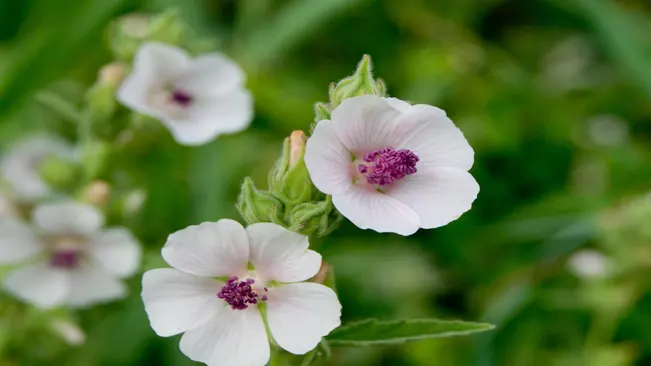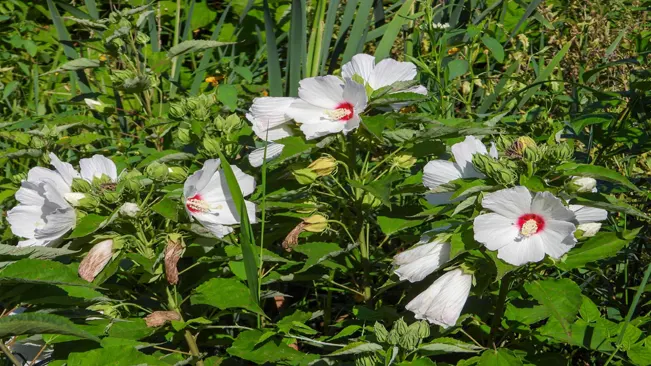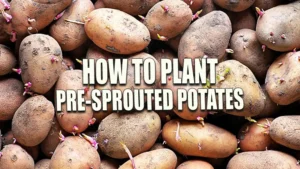Growing Marsh Mallow: Essential Tips for a Flourishing Plant
- March 7, 2024
- 0 comment
The marsh mallow plant, scientifically known as Althaea officinalis, is a charming and beneficial perennial herb that not only graces gardens with its delicate flowers but also offers historical significance in herbal medicine. Originating from Europe, western Asia, and North Africa, this plant has been cultivated for centuries. In this guide, we delve into the techniques and tips for successfully growing marsh mallow plants in your garden.

Choosing the Right Location
The first step in growing marsh mallow plants is selecting an appropriate location. They prefer moist, well-drained soil and can tolerate partial shade. An area that mimics their natural marshy habitat would be ideal. However, they are adaptable and can also thrive in a garden setting with regular watering.

Adapting to Garden Conditions
- Garden Soil Preparation: If you’re planting Marsh Mallow in a garden, ensure that the soil is enriched with organic matter like compost or well-rotted manure. This will improve soil fertility and drainage.
- Watering: In a garden setting, regular watering is essential to mimic the plant’s natural moist conditions, especially during dry spells or if the soil tends to dry out quickly.
- Partial Shade Preference: While Marsh Mallow plants can tolerate full sun, they prefer a location with partial shade, particularly in areas with strong afternoon sun. This preference is especially important in hotter climates, where too much direct sunlight can stress the plants.
Location Selection Tips
- Proximity to Water Sources: Planting near a water feature, like a pond or stream, can provide a more natural environment for Marsh Mallow, as long as the area does not flood.
- Using Containers: If your garden soil isn’t ideal, consider growing Marsh Mallow in containers. This allows you to control the soil composition and moisture levels more effectively.
- Space Requirements: Ensure there is enough space for the plants to grow. Marsh Mallow plants can reach up to 4 feet in height and spread out, so they need room to expand without being overcrowded.
Environmental Considerations
- Wind and Exposure: Avoid planting in areas with high winds or excessive exposure, as this can dry out the soil and harm the plants.
- Microclimate: Every garden has microclimates – areas that may be slightly warmer, cooler, wetter, or drier than the rest. Observe your garden’s microclimate and choose a spot that best suits the needs of Marsh Mallow plants.
Planting

Timing
- Early Spring Planting: Sowing seeds in early spring is ideal because it aligns with the natural growth cycle of the Marsh Mallow plant. In regions with colder climates, starting the seeds indoors or in a greenhouse is beneficial. This protects the young seedlings from frost and provides a controlled environment for germination.
Soil Preparation
- Well-Draining Soil Mix: Using the right soil mix is crucial. Marsh Mallow plants prefer moist conditions, but they don’t thrive in waterlogged soil. A well-draining soil mix, possibly with added organic matter or perlite, ensures that the soil stays moist but not overly wet.
- Seed Depth: Planting seeds at the right depth is essential for successful germination. Seeds should be sown about 1/4 inch deep. This depth provides the seeds with the right balance of moisture, warmth, and light they need to sprout.
Germination Process
- Moisture Maintenance: Consistently moist soil is key to germination. The soil should be kept damp but not soaked. Overwatering can lead to seed rot, whereas under-watering can cause the seeds to fail in germinating. Using a spray bottle to gently water the soil can help in maintaining the right moisture level.
- Expected Germination Time: Generally, Marsh Mallow seeds take about 2-4 weeks to germinate. This can vary slightly depending on the temperature and humidity conditions.
Post-Germination Care
- Transplanting Seedlings: Once the seedlings have grown strong enough and have a few sets of leaves, they are ready for transplanting. This typically occurs after the threat of frost has passed, making it safe for the young plants to thrive outdoors.
- Hardening Off: Before transplanting the seedlings directly into the garden, it’s beneficial to ‘harden them off’. This process involves gradually introducing the seedlings to outdoor conditions over a period of a week or so. Start by placing them outside for a few hours a day in a sheltered location and gradually increase their time outdoors. This helps them adjust to the outdoor temperature, light, and wind conditions.
Transplanting to the Garden
- Spacing: When transplanting the seedlings into your garden, space them adequately to allow for growth. Marsh Mallow plants can grow quite large, so leaving about 2-3 feet between each plant is advisable.
- Watering After Transplanting: Once transplanted, ensure the plants are watered well to help establish them in their new environment. Continue to maintain consistent soil moisture, especially as the plants adjust to the outdoor conditions.
Watering and Feeding
Regular watering is vital for marsh mallow plants, especially during dry periods. Keep the soil consistently moist but not waterlogged. A layer of mulch can help retain soil moisture. Fertilize the plants in spring with a balanced, all-purpose fertilizer to encourage healthy growth.
Watering Marsh Mallow Plants
Marsh mallow plants have a preference for moist soil conditions, reflecting their natural habitat in marshy areas. Here are key points to consider:
- Consistency is Key: It’s important to maintain a consistent level of soil moisture. This doesn’t mean the soil should be soggy; rather, it should feel like a wrung-out sponge – moist but not dripping wet.
- Adjust According to Weather: During hot, dry periods, your marsh mallow plants will need more frequent watering. On the other hand, during cooler or rainy periods, you should reduce the frequency.
- Monitoring Soil Moisture: The best way to judge if your plants need water is to check the soil moisture a few inches below the surface. If it feels dry at that depth, it’s time to water.
- Watering Technique: When watering, do so at the base of the plant to avoid wetting the foliage. This approach helps minimize the risk of leaf diseases.
- Mulching: Applying a layer of organic mulch around the base of your marsh mallow plants can be highly beneficial. Mulch helps retain soil moisture, reduces temperature fluctuations, and also adds organic matter to the soil as it decomposes.
Feeding Marsh Mallow Plants
Fertilization is another aspect of ensuring healthy growth:
- Spring Fertilization: Early spring is the ideal time to fertilize marsh mallow plants. The start of the growing season is when plants can most benefit from the extra nutrients.
- Type of Fertilizer: Use a balanced, all-purpose fertilizer. This means the nitrogen (N), phosphorus (P), and potassium (K) content is in equal or nearly equal amounts (e.g., 10-10-10 or 20-20-20).
- Application: Follow the instructions on the fertilizer’s packaging for application rates and methods. Over-fertilizing can be detrimental, leading to excessive leaf growth and fewer flowers.
- Organic Options: If you prefer organic gardening, you can use compost or well-rotted manure as a natural fertilizer. These organic materials improve soil structure and slowly release nutrients.
- Avoid Overfeeding: More is not always better. Overfeeding can lead to lush foliage at the expense of blooms, and can also increase the likelihood of pests and diseases.
Pruning and Maintenance
Pruning is not generally necessary, but you can remove dead or yellowing leaves to maintain the plant’s appearance. Watch out for common pests like aphids and treat them promptly with appropriate organic solutions.
Pruning
Marsh Mallow plants typically require minimal pruning, but some attention can help maintain their health and appearance:
- Deadheading: Although not strictly necessary for the plant’s health, removing spent flowers (deadheading) can promote further blooming and keep the plant looking tidy.
- Removing Old Leaves: Periodically check for and remove any dead or yellowing leaves. This not only improves the plant’s appearance but also helps in preventing the spread of any potential diseases and pests that often target weakened or dying foliage.
- Shape Maintenance: If you desire a specific shape or size, light pruning can be done. However, it’s important to note that heavy pruning might reduce flowering as these plants bloom on old wood.
- Post-Blooming Care: After the blooming season, you can cut back the plant to help rejuvenate it for the next season. However, this is more of a cosmetic measure and not essential for the plant’s health.
Maintenance
Regular maintenance is key to keeping your Marsh Mallow plants healthy:
- Watering: Consistency is key. Keep the soil moist, particularly in dry weather. However, avoid waterlogging as this can lead to root rot.
- Mulching: Applying a layer of organic mulch around the base of the plants can help retain soil moisture and suppress weeds. Mulch also gradually breaks down, providing organic matter to the soil.
- Feeding: Use a balanced, all-purpose fertilizer in the spring. Over-fertilization can lead to lush foliage at the expense of flowers, so it’s better to err on the side of caution.
- Pest Control: Regularly inspect your plants for signs of pests like aphids, spider mites, or whiteflies. If you detect pests, treat the plants with organic solutions like neem oil or insecticidal soap. Encouraging beneficial insects, such as ladybugs, can also help control aphid populations naturally.
- Disease Prevention: Good air circulation is vital for preventing fungal diseases. Ensure plants are not overcrowded. If you notice any diseased foliage, remove and dispose of it immediately to prevent spread.
- Winter Care: In colder climates, add extra mulch to protect the roots during winter. The plant may die back but will typically resprout in spring.
Harvesting
The roots, leaves, and flowers of the marsh mallow plant are all usable. Harvest the leaves and flowers in summer when they are in full bloom. The roots are best harvested in late autumn. These parts of the plant have been used historically in herbal medicine and even as a precursor to the modern marshmallow confectionery.
Harvesting Leaves and Flowers
- Timing: The ideal time to harvest leaves and flowers is in the summer, specifically when the plant is in full bloom. This is usually from late July to early September, depending on your climate.
- Method: Carefully pick the leaves and flowers by hand. For the leaves, select the vibrant, healthy-looking ones. Similarly, for the flowers, choose those that are fully open and exhibit a healthy color.
- Usage: The leaves and flowers of the marsh mallow are known for their soothing properties and are commonly used in herbal teas, salves, and syrups. They are particularly valued for their mucilaginous qualities, which can help in soothing irritated mucous membranes.
Harvesting Roots
- Timing: The roots should ideally be harvested in the late autumn, typically after the first frost. This is when the plant’s energy is concentrated back into the root, making it the most potent.
- Method: To harvest the root, gently dig around the base of the plant, taking care not to damage it excessively. Extract the root, shake off any excess soil, and then wash it thoroughly.
- Preparation: After washing, the roots can be cut into smaller pieces and dried for storage. The drying process involves laying them out in a well-ventilated, dry area away from direct sunlight. Once dried, they can be stored in an airtight container.
- Usage: Historically, the root of the marsh mallow plant was used to make a confectionary that is the ancestor of the modern marshmallow. Although today’s marshmallows are typically made from gelatin and sugar, the original treat was made from the plant’s root sap. In herbal medicine, marsh mallow roots are valued for their high mucilaginous content and are used to soothe the digestive and respiratory tracts.
Preservation and Storage
- Both the leaves, flowers, and dried roots should be stored in a cool, dry place away from direct sunlight. Properly stored, they can be used throughout the year for various herbal preparations.
Culinary and Medicinal Applications
- In the kitchen, the leaves and flowers can be used fresh in salads or dried for tea.
- Medicinally, the parts of the marsh mallow plant are often infused or decocted to treat sore throats, coughs, and digestive issues due to their soothing properties.
Overwintering
In colder climates, marsh mallow plants may die back in winter. However, they are perennial and will regrow in spring. Mulching around the base can provide extra protection against frost.
Preparing for Winter
As winter approaches, it’s essential to prepare your marsh mallow plants for the colder weather:
- Reduce Watering: As the plant’s growth slows down, you should gradually reduce watering. This helps the plant to harden off and prepares it for winter dormancy.
- Stop Fertilizing: Do not fertilize the marsh mallow plant late in the growing season or during winter. Fertilization encourages new growth, which is more susceptible to winter damage.
Mulching for Protection
Mulching is a key step in overwintering your marsh mallow plants:
- Choice of Mulch: Use organic materials like straw, leaves, or wood chips for mulching. These materials will insulate the soil, keeping it warmer and more consistent in temperature.
- Applying the Mulch: As the weather begins to cool, apply a thick layer of mulch (about 2-4 inches) around the base of the plant. Be sure not to pile it directly against the stems to prevent rot.
- Benefits: Mulching not only protects the roots from freezing temperatures but also helps retain moisture in the soil and can provide nutrients as it decomposes.
Spring Care
As winter ends and temperatures begin to rise, the marsh mallow plant will start to show new growth:
- Remove Mulch: Gradually remove the mulch layer to allow the soil to warm up. Be careful not to damage any new shoots emerging from the ground.
- Resume Watering: Increase watering as the plant comes out of dormancy and begins to grow again.
- Check for Pests and Diseases: Early spring is a good time to check for any signs of pests or diseases and treat them accordingly.
Conclusion
Growing marsh mallow plants is a rewarding experience for any gardener. Not only do they add beauty to your garden, but they also carry a rich history and offer various uses in herbal remedies. With the right care and environment, these enchanting plants can be a delightful addition to your garden landscape.
FAQs (Frequently Asked Questions)
- What is a Marsh Mallow Plant?
The Marsh Mallow (Althaea officinalis) is a perennial herb native to Europe, Western Asia, and North Africa. It’s known for its soft, velvety leaves and pale pink or white flowers. - Where Should I Plant Marsh Mallow?
Choose a spot with moist, well-drained soil and partial shade. They thrive in areas that mimic their natural marshy habitats but can adapt to regular garden conditions with adequate water. - When is the Best Time to Plant Marsh Mallow?
The best time to plant Marsh Mallow is in early spring. If you’re starting from seeds, sow them indoors or in a greenhouse before the last frost and transplant outdoors when the seedlings are strong enough. - How Do I Propagate Marsh Mallow Plants?
You can propagate Marsh Mallow from seeds, cuttings, or by dividing the roots. Each method has its specific steps, but seed propagation is the most common for home gardeners. - How Much Sunlight Does Marsh Mallow Need?
Marsh Mallow plants prefer a balance of sun and shade. They do well in partially shaded areas, especially in regions with strong afternoon sun. - How Often Should I Water Marsh Mallow Plants?
Keep the soil consistently moist, especially during dry spells. However, avoid waterlogging the soil. The frequency will depend on your climate and soil type. - Do I Need to Fertilize Marsh Mallow Plants?
Yes, a balanced, all-purpose fertilizer applied in the spring can promote healthy growth. Avoid over-fertilizing, as this can lead to excessive leaf growth at the expense of flowers. - Are Marsh Mallow Plants Susceptible to Pests or Diseases?
They can attract common garden pests like aphids. Regularly check your plants and treat pests with appropriate organic solutions. They are generally disease-resistant but watch for signs of root rot in overly wet conditions. - How Do I Harvest Marsh Mallow Plants?
Harvest leaves and flowers in summer when in full bloom. For roots, which are often used in herbal preparations, harvest in late autumn. Always leave enough plant material for the plant to sustain itself. - How Do I Overwinter Marsh Mallow Plants?
In colder regions, the plants may die back in winter but will regrow in spring. Apply a layer of mulch around the base for frost protection.

Kristine Moore
Forestry AuthorI'm Kristine Moore, a seasoned garden landscaping professional with over 30 years of experience. My extensive career has been dedicated to transforming outdoor spaces into stunning, sustainable landscapes. With a deep understanding of horticulture, design principles, and environmental stewardship, I have become a respected figure in the field, known for creating harmonious, visually appealing, and eco-friendly gardens. My commitment to excellence and continuous learning in landscaping trends and techniques has solidified my reputation as an expert in garden design and implementation.













Leave your comment